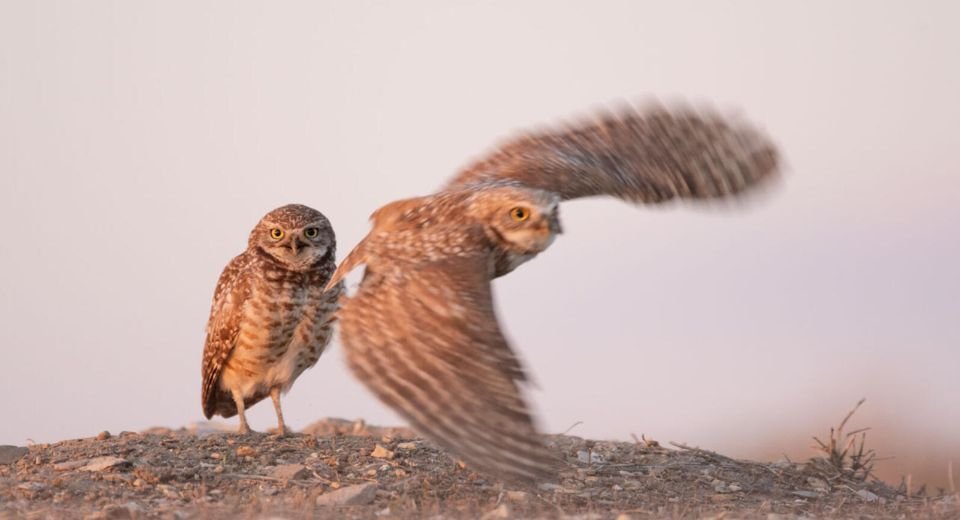HQ Team
December 5, 2023: As cities light up during the night, the pollution caused by the illumination sets an ‘ecological trap’ for migratory birds causing them to collide with glass buildings leading to their death, a study finds.
Between October 4-5, about 1,000 migratory birds were killed when they collided with an illuminated glass building in Chicago.
Scientists used weather radar data to map bird stopover density in the US and found that artificial light is a top indicator of where birds will land. “City lights lure birds into what can be an ecological trap,” said lead author Kyle Horton, an assistant professor in Colorado State University’s Department of Fish, Wildlife and Conservation Biology.
The study paired more than 10 million radar observations with landscape and other place-based information to try to explain why birds choose to rest where they do.
Out of 49 predictors, light pollution was the number two predictor of stopover density.
Elevation
The top predictor was elevation, which provides context for where birds are flying but doesn’t explain why they are flying there. The patterns created by migrating birds that are picked up by radar tend to follow coastlines or a particular elevation. Light pollution is the top predictor of human influence on bird migration.
Every year in North America, more than 3.5 billion birds move north in the spring and 4 billion birds fly south in the fall. More than 80% of them travel at night, navigating with the night sky. However, as they pass over towns and cities on their way, many become disoriented by bright artificial lights and skyglow.
While lights can cause birds to collide with buildings and windows, bird fatalities are more directly caused by the amount of energy the birds waste flying around in confusion, according to the National Audubon Society, a non-profit conservation organization.
The exhaustion can then leave them vulnerable to other urban threats and deplete their energy reserves needed for surviving migration and producing chicks in subsequent breeding seasons.
Light pollution affects dozens of species, such as the Burrowing Owl, Yellow-billed Cuckoo, and Grasshopper Sparrow.
Stopover sites
Urban parks can be decent stopover sites, but birds that rest there might need to compete over limited resources.
Birds migrate hundreds to thousands of miles – sometimes burning half their body mass during the journey. Finding a good place to rest and refuel is critical for migrating birds to survive and thrive once they reach their destination.
“These stopover locations are the fuelling stations,” Horton said. “If you’re on a cross-country trip, and there are no fuelling stations, then you’re stranded. If they don’t have a good spot to rebuild energy supplies, migration can’t happen.”
The study provides the first continent-wide maps of migration stopover hotspots in the contiguous US, and knowing these broad-scale layover patterns can help develop conservation plans.
“Cities pose multiple risks to migrating birds,” said co-author and Michigan State University Professor Geoff Henebry. “They also offer resources for the tired birds to rest and refuel. Our study is notable in that it combines big data – and a lot of processing – from the weather surveillance radar network with big data from multiple spaceborne sensors to address key questions regarding the influence of urban areas on bird migration.”
Horton and his colleagues are working with nonprofit and government organizations to do both, but urban lighting involves lots of stakeholders, making it a complicated issue.
“We don’t often think about light as a pollutant, but it checks all the boxes of what pollution is,” Horton said.
Lights out
Tools like BirdCast — a collaborative project among CSU, the Cornell Lab of Ornithology and the University of Massachusetts — could help.
BirdCast provides migration forecasts and real-time maps from weather radar. Anyone can create alerts to be notified when birds are flocking near their city. Forecasts pinpoint which nights are most important for reducing light pollution.
Retrofitting windows with decals like gridded dots or lines can help prevent collisions by revealing the barrier to birds. Lowering the brightness and softening the colour of lights can help too. Bright white or blue lights are the worst for wildlife, while warmer hues, like red, orange and yellow, are less attractive.
Horton said mass fatalities involving 100 or more birds are all too common. It is estimated that nearly one billion birds collide with buildings in the United States every year.
The casualties during the October 4-5 collision were mostly songbirds – 33 species were tallied, according to the Chicago Field Museum. These birds benefit people by eating insects that plague crops and gardens, pollinating plants and distributing seeds.
“If we turned off all lights tonight, there would be no birds colliding because of lights tonight,” Horton said. “The impact is immediate and positive for birds.”



